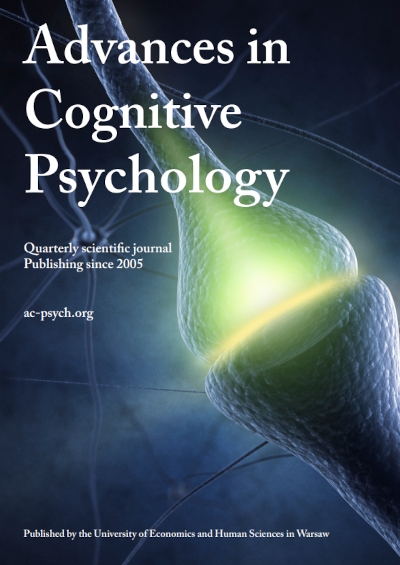Archive of all online content
-
Volume 21 Issue 4
pp. 309-500
(16 November 2025) -
Volume 21 Issue 3
pp. 212-308
(2 September 2025) -
Volume 21 Issue 2
pp. 120-211
(25 May 2025) -
Volume 21 Issue 1
pp. 1-93
(11 March 2025)
-
Volume 20 Issue 4
pp. 237-388
(20 November 2024) -
Volume 20 Issue 3
pp. 158-236
(19 August 2024) -
Volume 20 Issue 2
pp. 80-157
(24 June 2024) -
Volume 20 Issue 1
pp. 1-79
(1 March 2024)
-
Volume 19 Issue 4
pp. 1-105
(27 December 2023) -
Volume 19 Issue 3
pp. 211-333
(25 July 2023) -
Volume 19 Issue 2
pp. 111-200
(30 June 2023) -
Volume 19 Issue 1
pp. 1-110
(31 March 2023)
-
Volume 18 Issue 4
pp. 243-303
(31 December 2022) -
Volume 18 Issue 3
pp. 165-202
(30 September 2022) -
Volume 18 Issue 2
pp. 85-164
(30 June 2022) -
Volume 18 Issue 1
pp. 1-84
(31 March 2022)
-
Volume 17 Issue 4
pp. 250-291
(31 December 2021) -
Volume 17 Issue 3
pp. 193-249
(30 September 2021) -
Volume 17 Issue 2
pp. 99-192
(30 June 2021) -
Volume 17 Issue 1
pp. 1-98
(31 March 2021)
-
Volume 16 Issue 4
pp. 291-369
(31 December 2020) -
Volume 16 Issue 3
pp. 176-290
(30 September 2020) -
Volume 16 Issue 2
pp. 85-175
(30 June 2020) -
Volume 16 Issue 1
pp. 1-84
(31 March 2020)
-
Volume 15 Issue 4
pp. 236-317
(31 December 2019) -
Volume 15 Issue 3
pp. 169-235
(30 September 2019) -
Volume 15 Issue 2
pp. 75-168
(30 June 2019) -
Volume 15 Issue 1
pp. 1-74
(31 March 2019)
-
Volume 14 Issue 4
pp. 150-208
(31 December 2018) -
Volume 14 Issue 3
pp. 62-150
(30 September 2018) -
Volume 14 Issue 2
pp. 38-61
(30 June 2018) -
Volume 14 Issue 1
pp. 1-37
(31 March 2018)
-
Volume 13 Issue 4
pp. 267-322
(31 December 2017) -
Volume 13 Issue 3
pp. 190-266
(30 September 2017) -
Volume 13 Issue 2
pp. 121-189
(30 June 2017) -
Volume 13 Issue 1
pp. 1-120
(31 March 2017)
-
Volume 12 Issue 4 (special issue)
pp. 150-235
(31 December 2016) -
Volume 12 Issue 3
pp. 130-149
(30 September 2016) -
Volume 12 Issue 2
pp. 67-129
(30 June 2016) -
Volume 12 Issue 1
pp. 1-66
(31 March 2016)
-
Volume 11 Issue 4
pp. 118-135
(31 December 2015) -
Volume 11 Issue 3
pp. 64-117
(30 September 2015) -
Volume 11 Issue 2
pp. 31-63
(30 June 2015) -
Volume 11 Issue 1
pp. 1-30
(31 March 2015)
-
Volume 10 Issue 4
pp. 119-155
(31 December 2014) -
Volume 10 Issue 3
pp. 81-118
(30 September 2014) -
Volume 10 Issue 2
pp. 32-80
(30 June 2014) -
Volume 10 Issue 1
pp. 1-31
(27 February 2014)
-
Volume 9 Issue 4
pp. 156-223
(31 December 2013) -
Volume 9 Issue 3
pp. 112-155
(24 October 2013) -
Volume 9 Issue 2
pp. 53-111
(30 June 2013) -
Volume 9 Issue 1
pp. 1-52
(31 March 2013)
-
Volume 8 Issue 4
pp. 267-295
(31 December 2012) -
Volume 8 Issue 3
pp. 210-266
(27 September 2012) -
Volume 8 Issue 2
pp. 70-209
(28 June 2012) -
Volume 8 Issue 1
pp. 1-69
(29 March 2012)
-
Volume 7 Issue 2
pp. 55-156
(31 December 2011) -
Volume 7 Issue 1
pp. 1-54
(31 March 2011)
-
Volume 6 Issue 6
pp. 1-141
(31 December 2010)
-
Volume 5 Issue 5
pp. 1-134
(31 December 2009)
-
Volume 4 Issue 1
pp. 1-14
(31 March 2008)
-
Volume 3 Issue 4
pp. 419-465
(31 December 2007) -
Volume 3 Issue 3
pp. 363-417
(30 September 2007) -
Volume 3 Issue 1
pp. 1-361
(31 March 2007)
-
Volume 2 Issue 4
pp. 239-276
(31 December 2006) -
Volume 2 Issue 2
pp. 99-237
(30 June 2006) -
Volume 2 Issue 1
pp. 1-97
(31 March 2006)
-
Volume 1 Issue 1
pp. 1-16
()
Volume 9 Issue 4 (2013)
Editorial to the special issue Neuronus
Rob H. J. van der Lubbe, Michał Kuniecki
Did you visit the Neuronus conferences in the years 2012 and 2013 in Kraków? if not, then you certainly should have a close examination of this special issue including this introduction to at least have a glimpse of an idea of the highly interesting topics in the field of cognitive neuroscience that were presented at these conferences. if you were there, it is for sure a good choice to focus on this special issue as well, first to refresh your minds (we know our memories are far from perfect), but especially to see what happened with research of the presenters at these conferences.
Keywords: right ear advantage, attention, EEG, beta band, visual word form area, disorders of consciousness, functional connectivity, default mode network, DTI, structural connectivity, MUC model, N400, neural oscillations, schizophrenia, insight, sleepInsights into sleep's role for insight: Studies with the number reduction task
Rolf Verleger, Michael Rose, Ullrich Wagner, Juliana Yordanova, Vasil Kolev

Rolf Verleger, Department of Neurology, University of Lübeck, D 23538 Lübeck, Germany.
E-mail: Rolf.Verleger@Neuro.Uni-Luebeck.de
In recent years, vibrant research has developed on "consolidation" during sleep: to what extent are newly experienced impressions reprocessed or even restructured during sleep? We used the number reduction task (NRT) to study if and how sleep does not only reiterate new experiences but may even lead to new insights. In the NRT, covert regularities may speed responses. This implicit acquisition of regularities may become explicitly conscious at some point, leading to a qualitative change in behavior which reflects this insight. By applying the NRT at two consecutive sessions separated by an interval, we investigated the role of sleep in this interval for attaining insight at the second session. In the first study, a night of sleep was shown to triple the number of participants attaining insight above the base rate of about 20%. In the second study, this hard core of 20% discoverers differed from other participants in their task-related EEG potentials from the very beginning already. In the third study, the additional role of sleep was specified as an effect of the deep-sleep phase of slow-wave sleep on participants who had implicitly acquired the covert regularity before sleep. It was in these participants that a specific increase of EEG during slow-wave sleep in the 10-12 hz band was obtained. These results support the view that neuronal memory reprocessing during slow-wave sleep restructures task-related representations in the brain, and that such restructuring promotes the gain of explicit knowledge.
Keywords: sleep, insight, implicit learning, explicit knowledge, EEG, ERPsThe building blocks of social communication
Margaret A. Niznikiewicz

Margaret A. Niznikiewicz, Boston VA Healthcare Center, Harvard Medical School, Psychiatry 116A, 940 Belmont Street, Brockton, MA 02301, USA.
E-mail: margaret_niznikiewicz@hms.harvard.edu
In the present review, social communication will be discussed in the context of social cognition, and cold and hot cognition. The review presents research on prosody, processing of faces, multimodal processing of voice and face, and the impact of emotion on constructing semantic meaning. Since the focus of this mini review is on brain processes involved in these cognitive functions, the bulk of evidence presented will be from event related potential (ERP) studies as this methodology offers the best temporal resolution of cognitive events under study. The argument is made that social communication is accomplished via fast acting sensory processes and later, top down processes. Future directions both in terms of methodology and research questions are also discussed.
Keywords: social cognition, ERP, social communicationLateralized power spectra of the EEG as an index of visuospatial attention
Rob H. J. van der Lubbe, Christian Utzerath

Rob H. J. Van der Lubbe, Department of Cognitive Psychology and Ergonomics, Faculty of Behavioral Sciences, University of
Twente, Postbus 217, 7500 AE Enschede, The Netherlands.
E-mail: R.H.J.vanderLubbe@gw.utwente.nl
The electroencephalogram (EEG) was measured in an endogenous orienting paradigm where symbolic cues indicated the likely side of to-be-discriminated targets. Combined results of event related lateralizations (ERLs) and a newly derived measure from wavelet analyses that we applied on the raw EEG and individual event-related potentials (ERPs), the lateralized power spectra (LPS) and the LPS-ERP, respectively, confirmed the common view that endogenous orienting operates by anterior processes, probably originating from the frontal eye fields, modulating processing in parietal and occipital areas. the LPS data indicated that modulation takes place by increased inhibition of the irrelevant visual field and/or disinhibition of the relevant to-be-attended visual field. combined use of ERLs, the LPS, and the LPS-ERP indicated that most of the involved processes can be characterized as externally evoked, either or not with clear individual differences as some evoked effects were only visible in the LPS-ERP, whereas few processes seemed to have an internally induced nature. Use of the LPS and the LPS-ERP may be advantageous as it enables to determine the involvement of internally generated lateralized processes that are not strictly bound to an event like stimulus onset.
Keywords: visuospatial attention, inhibition, ERPs, ERls, waveletsSpace positional and motion SRC effects: A comparison with the use of reaction time distribution analysis
Piotr Styrkowiec, Remigiusz Szczepanowski

Piotr Styrkowiec, Institute of Psychology, University of Wroclaw, ul. Dawida 1, 50-527 Wroclaw, Poland.
E-mail: p.styrkowiec@psychologia.uni.wroc.pl
The analysis of reaction time (RT) distributions has become a recognized standard in studies on the stimulus response correspondence (SRC) effect as it allows exploring how this effect changes as a function of response speed. In this study, we compared the spatial SRC effect (the classic Simon effect) with the motion SRC effect using RT distribution analysis. Four experiments were conducted, in which we manipulated factors of space position and motion for stimulus and response, in order to obtain a clear distinction between positional SRC and motion SRC. Results showed that these two types of SRC effects differ in their RT distribution functions as the space positional SRC effect showed a decreasing function, while the motion SRC showed an increasing function. This suggests that different types of codes underlie these two SRC effects. Potential mechanisms and processes are discussed.
Keywords: stimulus-response correspondence, Simon effect, space positional SRC effect, motion SRC effect, RT distribution analysisAdolf Beck: A pioneer in electroencephalography in between Richard Caton and Hans Berger
Anton Coenen, Oksana Zayachkivska

Anton Coenen, Donders Centre for Cognition, Radboud University Nijmegen, P.O. Box 9104, 6500 HE Nijmegen, The Netherlands.
E-mail: a.coenen@donders.ru.nl
Adolf Beck, born in 1863 in Kraków (Poland), joined the Department of Physiology of the Jagiellonian University in 1889, to work directly under the prominent professor in physiology Napoleon Cybulski. Following his suggestion, Beck started studies on the electrical brain activity of animals. He recorded negative electrical potentials in several brain areas evoked by peripheral sensory impulses. Using this technique, Beck localised various centres in the brain of several animal species. In doing this, he discovered continuous electrical oscillations in the electrical brain activity and noted that these oscillations ceased after sensory stimulation. This was the first description of desynchronisation in electrical brain potentials. He published these findings in 1890 in the German Centralblatt für Physiologie. Immediately, an intense discussion arose under physiologists on the question who could claim being the founder of electroencephalography. Ultimately, Richard Caton from Liverpool showed that he had performed similar experiments in monkeys years earlier. Nevertheless, Beck added several new elements to the nature of electrical brain activity, such as evoked potentials and desynchronisation. In looking back, Adolf Beck can be regarded, next to Richard Caton and together with Hans Berger (who later introduced the electrical brain recording method to humans), as one of the founders of electroencephalography.
Keywords: Adolf Beck, pioneer in electroencephalography, spontaneous oscillations, evoked potentials, desynchronisation of brain waves, Richard Caton, Hans BergerLetter from the editors
Rob H. J. van der Lubbe, Ulrich Ansorge
_



